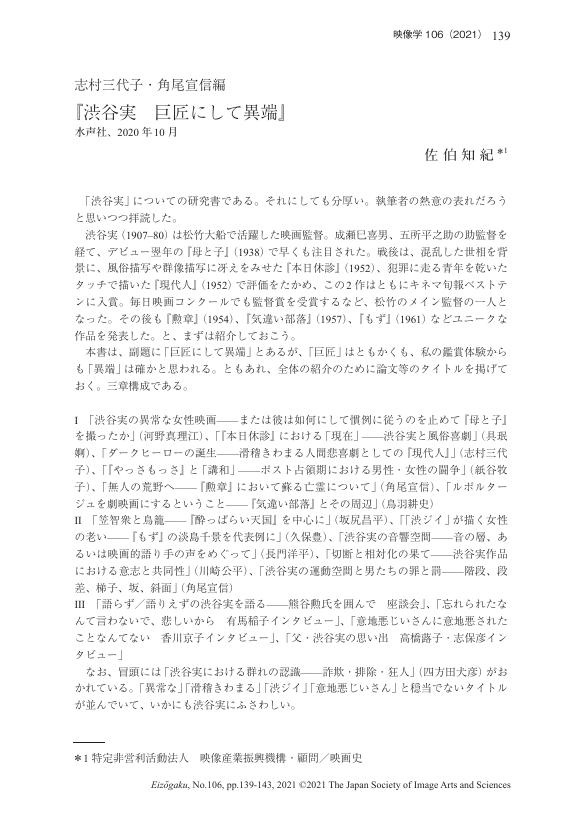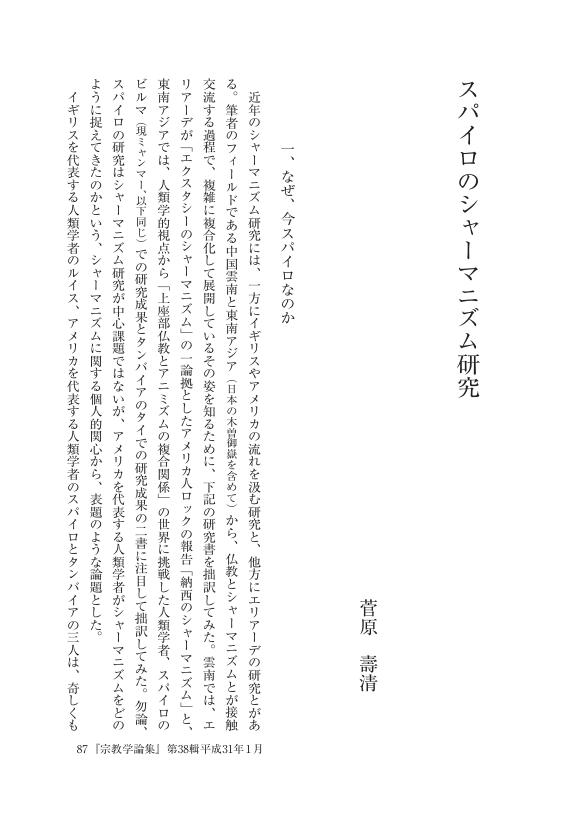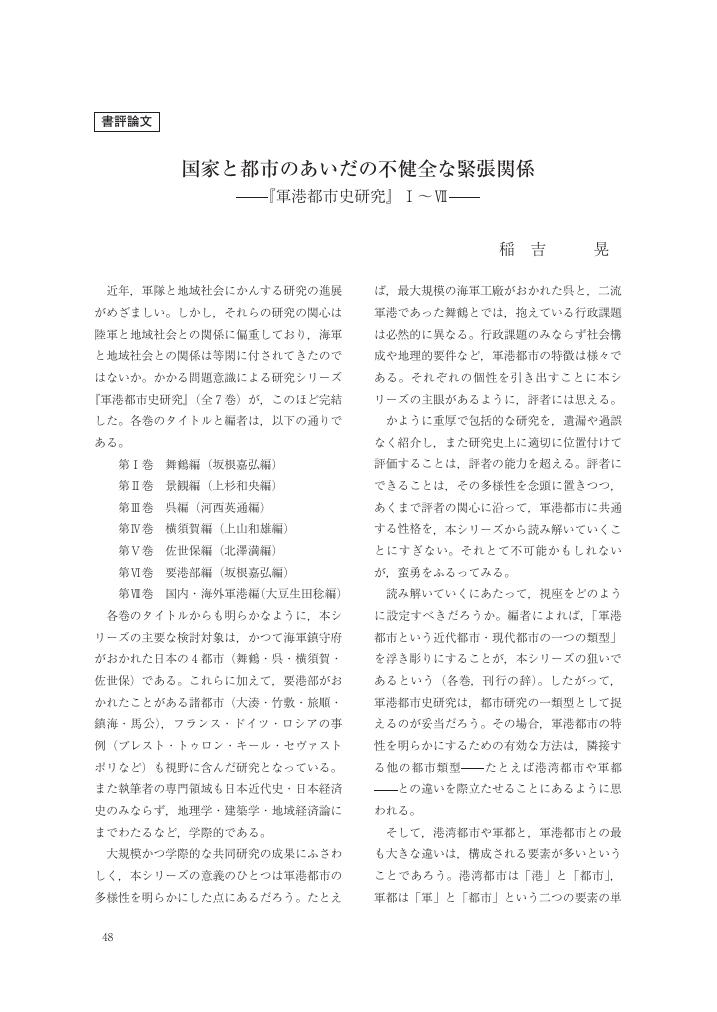2 0 0 0 OA コロナウィルスの感染対策に有用な室内環境に関連する研究事例の紹介
- 著者
- 篠原 直秀
- 出版者
- 一般社団法人 室内環境学会
- 雑誌
- 室内環境 (ISSN:18820395)
- 巻号頁・発行日
- vol.23, no.2, pp.99-106, 2020 (Released:2020-08-01)
- 参考文献数
- 33
- 被引用文献数
- 1 1
2020年の春時点で, 日本を含む世界中で新型コロナウィルス(SARS-CoV-2)の感染が猛威を振るっており, 三密を避けることなど, より一層の感染対策が求められている。 本稿では, 室内環境における感染対策に関わる情報を収集・整理した。 感染者が呼吸・会話・咳・くしゃみなどをすると, ウィルスを含む飛沫が環境中に飛散する。 会話や咳で飛散する大きな粒子は, 多くの場合2 m以内に床面に沈着するが, 室内の気流によっては5 m程度飛散することもある。 また, 飛沫核などの小さな粒子は, 沈着せずに数時間もしくはそれ以上室内を漂う可能性がある。 室内空気中からウィルスが除去される経路としては, 床面や壁面への沈着, 換気による屋外への排出, ウィルスの不活化があるが, 無風の状態では10 μmを超えるサイズの粒子ではほぼ沈着で除去されるが, 数μm以下の粒子では換気と不活化の寄与が大きい。 室内を漂うエアロゾル上の新型コロナウィルスの不活化の半減期は1.1時間程度であり, 換気回数1回/hの場合よりも減衰への寄与は小さい。 日本の一般家屋の日常生活時の換気回数は, 春夏で1.2-1.7回/h, 秋冬で0.6回/h程度であり, 病室などで感染対策として取られる換気回数よりはるかに低い。 窓開け換気は室内濃度を低減させるのに非常に有効であるが, 屋外の風向や風速によっては十分な換気量が得られないケースもある。 空気清浄機については, コロナウィルスについての研究はないが, HEPAフィルター(High Efficiency Particulate Air Filter)を用いた場合には, ウィルスについても一定の効果が認められている。
- 著者
- 青山 太郎
- 出版者
- 日本映像学会
- 雑誌
- 映像学 (ISSN:02860279)
- 巻号頁・発行日
- vol.107, pp.158-162, 2022-02-25 (Released:2022-03-31)
2 0 0 0 OA 志村三代子・角尾宣信編『渋谷実 巨匠にして異端』水声社、2020年10月
- 著者
- 佐伯 知紀
- 出版者
- 日本映像学会
- 雑誌
- 映像学 (ISSN:02860279)
- 巻号頁・発行日
- vol.106, pp.139-143, 2021-07-25 (Released:2021-08-25)
2 0 0 0 OA 聞き書き・わが国における法史学の歩み(七) : 奥村郁三先生にお聞きする
- 著者
- わが国における法史学の歩み研究会 岩野 英夫 Hideo Iwano
- 出版者
- 同志社法學會
- 雑誌
- 同志社法學 = The Doshisha Hogaku (The Doshisha law review) (ISSN:03877612)
- 巻号頁・発行日
- vol.59, no.1, pp.357-439, 2007-05-31
東洋法史学者である奥村郁三教授へのインタビューを原稿にしたものであり、内藤湖南以降の東洋史・東洋法制史の研究史、研究上の重要テーマが論じられている。
2 0 0 0 OA 不安障害とセロトニン受容体 不安とストレス
- 著者
- 松本 真知子 吉岡 充弘
- 出版者
- 公益社団法人 日本薬理学会
- 雑誌
- 日本薬理学雑誌 (ISSN:00155691)
- 巻号頁・発行日
- vol.115, no.1, pp.39-44, 2000 (Released:2007-01-30)
- 参考文献数
- 43
- 被引用文献数
- 2 3
不安障害に関わっていると考えられているセロトニン(5-hydroxytryptamine:5-HT)受容体について現時点での知見を概説した.現在5-HT受容体は,7ファミリーに分類され,少なくとも14種類のサブタイプが存在している.このうち不安と最も関連性が深いとされているのは5-HT1A受容体である.5-HT1A受容体の部分作動薬であるブスピロンおよびタンドスピロンは,依存性の少ない有用な抗不安薬として現在臨床で用いられている.イプサピロン,ゲピロンなど抗不安作用を示す多くの5-HT1A受容体作動薬は,5-HTの遊離,合成あるいは神経発火を抑制する.また5-HT1A受容体ノックアウトマウスでは不安が亢進する.これらの結果は5-HT1A受容体を介した5-HT遊離調節機構が不安の発現あるいは病態に深く関わっていることを示唆する.一方5-HT1B受容体ノックアウトウスでは攻撃行動が増強する.5-HT2および5-HT3受容体拮抗薬は様々な不安モデル動物を用いた実験で抗不安作用を示す.アンチセンス法により5-HT6受容体発現を抑制した場合も,不安による5-HT神経過活動は減弱する.以上の結果は,5-HT1A受容体以外にも5-HT1B,5-HT2,5-HT3および5-HT6といった多くの5-HT受容体が不安障害に関わっていることを示す.これらの受容体が不安発現に直接寄与しているのか,あるいは不安により適応的に生じた5-HT神経過活動を調節しているのかは明らかでないが,不安の病態生理に5-HT神経系が重要な役割を担っていることは確かであろう
2 0 0 0 OA ピアノ演奏における運指法についての基本概論
- 著者
- 武内 俊之
- 出版者
- 福岡教育大学
- 雑誌
- 福岡教育大学紀要. 第五分冊, 芸術・保健体育・家政科編 = Bulletin of Fukuoka University of Education. Part V, Art, health and physical education, and home economics (ISSN:02863243)
- 巻号頁・発行日
- vol.63, pp.1-8, 2014-02-10
2 0 0 0 OA 天上の魂と地上の身体 矢川澄子『兎とよばれた女』における『竹取物語』解釈
- 著者
- 西原 志保
- 出版者
- 古代文学研究会
- 雑誌
- 古代文学研究 第二次 (ISSN:24361062)
- 巻号頁・発行日
- vol.2021, no.30, pp.3014, 2021 (Released:2021-11-13)
2 0 0 0 OA 『枕草子』「雪山の章段」における〈聖〉と〈俗〉
- 著者
- 勝亦 志織
- 出版者
- 古代文学研究会
- 雑誌
- 古代文学研究 第二次 (ISSN:24361062)
- 巻号頁・発行日
- vol.2021, no.30, pp.3004, 2021 (Released:2021-11-13)
2 0 0 0 OA 新出「若紫」巻の本文と巻末付載「奥入」 ―定家監督書写四半本『源氏物語』との関係を中心に
- 著者
- 新美 哲彦
- 出版者
- 中古文学会
- 雑誌
- 中古文学 (ISSN:02874636)
- 巻号頁・発行日
- vol.106, pp.82-94, 2021-11-30 (Released:2021-12-03)
2 0 0 0 OA ナショナルな教会からユニバーサルな教会へ? ギリシャ正教会の特徴とグローバル化への対応
- 著者
- 内山 明子
- 出版者
- 駒沢宗教学研究会
- 雑誌
- 宗教学論集 (ISSN:03873323)
- 巻号頁・発行日
- vol.2019, no.38, pp.25-54, 2019 (Released:2021-04-17)
2 0 0 0 OA スパイロのシャーマニズム研究
- 著者
- 菅原 壽清
- 出版者
- 駒沢宗教学研究会
- 雑誌
- 宗教学論集 (ISSN:03873323)
- 巻号頁・発行日
- vol.2019, no.38, pp.87-98, 2019 (Released:2021-04-17)
2 0 0 0 パチンコ店における「ヌシ」の品格に関する一考察
- 著者
- 松崎 かさね
- 出版者
- 現代文化人類学会
- 雑誌
- 文化人類学研究 (ISSN:1346132X)
- 巻号頁・発行日
- vol.22, pp.106-120, 2021 (Released:2022-01-29)
- 参考文献数
- 13
The purpose of this paper is to discuss the dignity that Mr. B, who was once “Nushi” of a pachinko parlor (head of a store), emphasized, with reference to Max Weber's theory of charisma. From Mr. B's story, it can be said that he was in a considerably advantageous situation to get money, such as having the privilege to enter the store first. However, on the other hand, he didn't dare to get the money rationally which he emphasized was due to dignity. What is important to learn from Mr. B's practice is based on consideration for the store and general customers. In other words, the key of his practice was to express the attitude of valuing the relationship with the store and customers. This, in turn, kept him as a dignified person and also helped him to maintain the position of “Nushi” of the store.
2 0 0 0 現代日本でYOGAする人びと ――こころ・からだ・語りから
- 著者
- 前川 明穂
- 出版者
- 現代文化人類学会
- 雑誌
- 文化人類学研究 (ISSN:1346132X)
- 巻号頁・発行日
- vol.21, pp.124, 2021 (Released:2021-01-21)
2 0 0 0 アスリートの身体 ――ナチュラルとアンナチュラルのはざまで――
- 著者
- 竹村 瑞穂
- 出版者
- 現代文化人類学会
- 雑誌
- 文化人類学研究 (ISSN:1346132X)
- 巻号頁・発行日
- vol.21, pp.2-11, 2021 (Released:2021-01-21)
- 参考文献数
- 7
本稿では、競技スポーツ界が要求する競技者の身体の自然性にまなざしを向け、そこに浮かび上がる矛盾や問題性について指摘したい。 スポーツとは、じつに長い歴史をもつ人間の身体文化であるが、その過程で、科学技術の恩恵を受けながらさまざまな変貌を遂げてきた。トラック環境一つ取り上げてもその変化には驚かされるものがあり、科学技術による外的環境の改変が、スポーツ・パフォーマンスを向上させてきたことは事実である。このようなスポーツの高度化の過程において、外的環境の改変とともに注目に値するのは、スポーツをする人間の身体に向けられた改変への志向、すなわちドーピングの問題である。 ドーピング問題に対する倫理・哲学的研究の中では、ドーピングを禁止する直接的な根拠は見当たらないという議論も展開されてきた。ドーピング禁止理由の一つの論点に「身体の自然性」という視点があるが、しかし、この自然な身体こそが競技スポーツ界で排除の対象となる場合も生じている。先天的にテストステロンの値が高い女性アスリートの場合は、この身体の自然性こそが問題視され、ナチュラル・ドーピングとして人為的にその自然性を治療しなければ競技に参加できないような事態が生じているのである。 競技スポーツ界において求められる身体の自然性とは、いったい、どのような自然性なのだろうか。生殖細胞や体細胞を操作する遺伝子改良は“自然”なのだろうか。先天的にテストステロン値が高い女性アスリートは先天的に“自然ではない”のだろうか。このような疑問を背景に、競技スポーツ界が求める身体性をめぐる揺らぎと、要求する“恣意的な”自然性の在りようを読み解くこととする。
2 0 0 0 OA 眼球運動測定装置を用いたスポーツ選手のスキル分析
- 著者
- 猿樂 拓也 北濱 幹士 山田 光穗
- 出版者
- ヒューマンインタフェース学会
- 雑誌
- ヒューマンインタフェース学会論文誌 (ISSN:13447262)
- 巻号頁・発行日
- vol.23, no.1, pp.29-42, 2021 (Released:2021-02-25)
- 参考文献数
- 18
In recent years, due to international sports competitions, attention to sports has increased, and sports science research has been conducted to develop athletes who can play in international competitions. In sports science, the measurement of eye movements has attracted a great deal of attention because it can reveal the superior performance of an athlete. However, it has been difficult to measure eye movements during actual competition with conventional wired eye movement measurement devices. We developed a wireless eye movement measurement device and measured the line of sight during actual competition in various sports.
2 0 0 0 OA 視線から何がわかるか ―視線測定に基づく高次認知処理の解明
- 著者
- 大野 健彦
- 出版者
- 日本認知科学会
- 雑誌
- 認知科学 (ISSN:13417924)
- 巻号頁・発行日
- vol.9, no.4, pp.565-579, 2002-12-01 (Released:2008-10-03)
- 参考文献数
- 66
- 被引用文献数
- 21
Eye movement analysis has been used to understand human higher cognitive processes for over a century. It permits observation of a person's activities in detail without disturbing his or her behavior. This tutorial first discusses eye movement analysis topics, including the definition of gaze, various eye movement detection methods, eye movement analysis methods. Next, it introduces cognitive research on the analysis of eye movement for observing cognitive activities. Finally, it describes gaze based interactive systems as the application of eye movement analysis.
2 0 0 0 OA 反知性主義とアメリカン・デモクラシー R・ホーフスタッターの議論を手がかりとして
- 著者
- 清水 晋作
- 出版者
- 東北社会学研究会
- 雑誌
- 社会学研究 (ISSN:05597099)
- 巻号頁・発行日
- vol.103, pp.21-43, 2019-10-16 (Released:2021-10-24)
- 参考文献数
- 30
「ポスト真実」、特に「トランプ現象」を受けて、本稿は、ホーフスタッターの「反知性主義」論に依拠して、アメリカン・デモクラシーおよび民主主義の課題とゆくえを展望する。「トランプ現象」をめぐっては多くの議論や解釈がなされており、「ポピュリズム」、「グローバリズム/反グローバリズム」などの文脈で論じられることが多いように思われる。筆者は、「トランプ現象」を理解するために、ホーフスタッターが『アメリカの反知性主義』において展開した議論が有効であると考えている。本稿では、ホーフスタッターが「ニューヨーク知識人」の一員であったことから、ニューヨーク知識人としての側面にも着目しつつ、反知性主義についての彼の考察を通じて、「ポスト真実と民主主義のゆくえ」を展望したい。 本稿の議論は以下のように進める。第一節では、ホーフスタッターが属していたニューヨーク知識社会について概観し、ホーフスタッターの反知性主義論はマッカーシズムを背景に書かれたことを確認する。第二節では、さらにホーフスタッターを含めた「ニューヨーク知識人」のマッカーシズム論を考察し、ホーフスタッターの議論の内容と背景を理解する一助としたい。特にR・ホーフスタッター、S・M・リプセット、D・ベルの分析を取り上げる。第三~五節において、ホーフスタッターの『アメリカの反知性主義』の議論を追いかけながら、アメリカン・デモクラシーの特質について検討する。
2 0 0 0 OA ミシン工業におけるアセンブル・部品メーカーの帰趨
- 著者
- 沢井 実
- 出版者
- 経営史学会
- 雑誌
- 経営史学 (ISSN:03869113)
- 巻号頁・発行日
- vol.54, no.3, pp.3-25, 2019 (Released:2021-12-30)
Before Japan became a major exporter of home appliances and automobiles, there was an age of light-machine production in the 1950s and 1960s that included items such as cameras, home sewing machines, binoculars, etc. There were three types of home sewing machine manufacturers in the 1950s: the integration type that manufactured arms, beds, and other parts of the sewing machines entirely in the plant; the assembling type that assembled outsourced parts into finished products; and the mixed type that both manufactured and assembled parts.Large companies such as Janome Sewing Machine, Riccar, and Brother Industries formed the integration type, while small- and medium-sized companies that were largely located in Osaka formed the assembling type. Large home sewing machine companies went through an era of rapid growth in the domestic market. The export of home sewing machines was led by the small businesses, i.e., the assembling manufacturers.However, the competition to dominate the U.S. market—led mainly by assembling manufacturers—was so harsh that the export prices decreased due to market forces. The MITI introduced the minimum export price system (the supposed check price) to respond to this situation. Japanese sewing machines manufactured by the assembling manufacturers were often called Karasu (crow) machines, because they were completely black and did have no brand labels. In 1954, in the wake of the depression after the Korean War, integration manufacturers started making an effort to export products. By the 1960s, the distinction between the large manufacturers of Tokyo and Nagoya in the domestic market and the small business of Osaka in the export market had collapsed. The situation was symbolized by Janome’s acquisition of Sanko Sewing Machine Co., a medium-sized manufacturer that began as an assembler in Osaka in October 1959.One advantage that large integration manufacturers possessed over assembling manufacturers was that they could establish their own sales networks in the U.S. market. For assembling manufacturers of Karasu home sewing machines, the sales network behind the U.S. distributors was a black box, while the large integration manufacturers tried to establish their own sales networks in the U.S. market.
2 0 0 0 OA 国家と都市のあいだの不健全な緊張関係 ―『軍港都市史研究』Ⅰ~Ⅶ―
- 著者
- 稲吉 晃
- 出版者
- 経営史学会
- 雑誌
- 経営史学 (ISSN:03869113)
- 巻号頁・発行日
- vol.53, no.4, pp.48-54, 2018 (Released:2021-03-30)
2 0 0 0 OA 楚歌の話
- 著者
- 植田 渥雄
- 雑誌
- 日中言語文化 : 桜美林大学紀要 (ISSN:18820972)
- 巻号頁・発行日
- vol.6, pp.3-17, 2008-03-31







